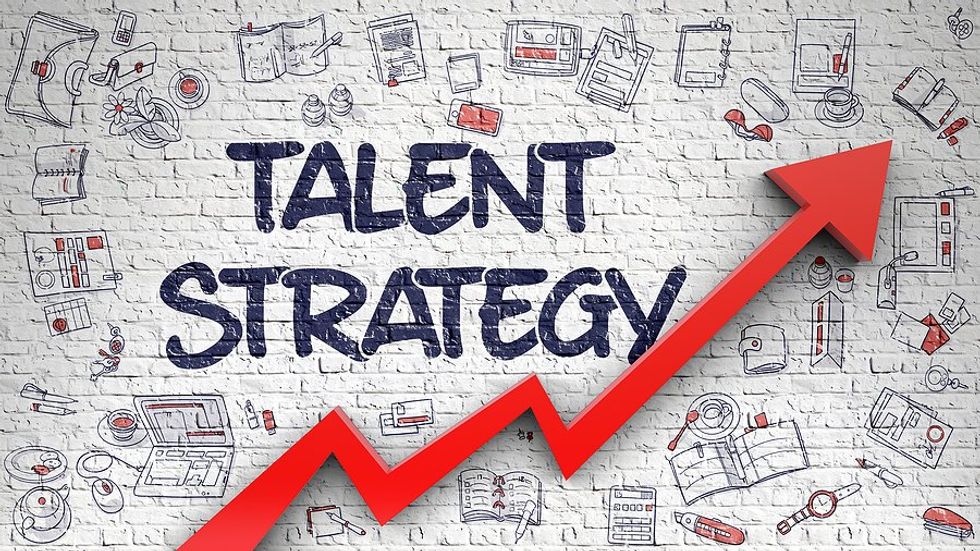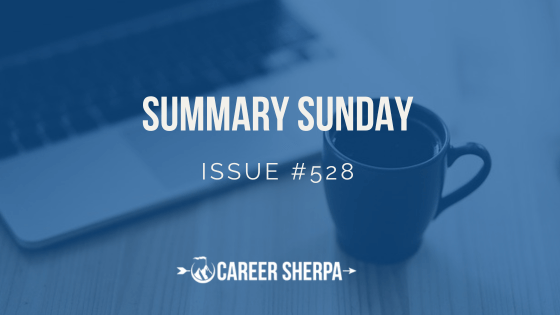
An effective talent acquisition strategy focuses on the organization’s long-term goals and a good candidate experience. Improving talent acquisition is crucial in order to attract, assess, and recruit top talent, all while creating an inclusive and diverse hiring process. So, what are the best talent acquisition practices to ensure the future success of an organization?
We recently asked our leading executives for their best tips on how to improve talent acquisition.
Here are their responses…
Kirsten Yurich, Executive Coach & Vistage Chair
âAcquiring talent is on the minds of every executive. If not on their minds, itâs on the minds of their immediate team. Having employees that turn your strategic vision into operational excellence is one of the most critical priorities for any leader.
That said, according to a recent report, 84% of leaders feel their strategic recruitment efforts are failing. Why?
In analyzing the data from experts, it comes down to one thing: impression.
Weâve all heard you donât remember what people say, but you remember how people make you feel. Itâs no different when it comes to talent acquisition, onboarding, and employee retention.
Why is your company failing at talent acquisition? You are leaving candidates with a bad impression.
- If your companyâs reputation is poor â your potential applicants are left with a bad impression.
- If your hiring team is unprofessional, inexperienced, or using antiquated methods â your potential applicants are left with a bad impression.
- If your internal culture is toxic or behind the times â your potential applicants are left with a bad impression.
- If you provide barely a glimpse of what the job entails â your potential applicants are left with a bad impression.
Leaders who struggle with talent acquisition need to evaluate a few key areas:
- Does the recruiting team first embody and second infuse the companyâs core values into the talent acquisition process?
- Does the recruiting team have the skills and knowledge needed for todayâs job market?
- Does the recruiting team have the resources needed to produce the outcomes expected by the executive team?
- Does recruiting have the same at your leadership table as sales and marketing? Their need to outsell the competition is no different.
When the recruiting team has the same level of expectations as sales and marketing, why do companies treat them as less than?
Kirsten Yurich is a former CEO and current Vistage Chair. As a clinician, professor, author, and executive, she leverages this unique blend and creates learning environments for executives to become better leaders, spouses, and parents.
John Schembari, Senior Education Executive

First, the hiring process has become ridiculously elongated. We lose candidates to other organizations with processes that are more efficient. Can some of these stages be combined? Impression, as Kirsten says above, matters. If you don’t value my time as a candidate during the hiring process, how will you value me when I work for you?
Hiring is biased. We all have implicit biases so it stands to reason that the more ways one is similar to those interviewing them the more likely a connection is to follow. While it might be more fun or easy to work with those like us, the organization itself might need different talents to succeed. There are many ways to reduce, if not eliminate, these biases.
Then, once hired, what are we doing to help our new employees succeed? After all, if employees leave too soon, we are back at the hiring tableâand this is costly! Yes, many organizations encourage ongoing feedback meetings between supervisor and subordinateâthese should continue. However, a supervisor is not an impartial mentor. We can do better in offering coaching programs to our staff. An ounce of prevention is worth a pound of cure.
John Schembari is a current K-12 teacher/school leader academic improvement coach and former school building and district administrator. He loves to draw, travel, swing dance, and read nonfiction.
Ana Smith, Leadership Development & Learning Strategist

Enhancing talent acquisition and unleashing the power of human connection. I’m excited about this key topic and will share some ideas on how organizations can elevate their talent acquisition strategies to attract and retain top talent. In today’s competitive job market, companies must adopt a holistic approach that embraces both technological advancements and the power of human connection. Let’s explore some key strategies for improving talent acquisition.
1. Embrace Innovative Technologies: Leverage the potential of cutting-edge technologies to streamline your talent acquisition process. From AI-driven applicant tracking systems to video interviews, these tools can help save time, enhance efficiency, and ensure a seamless candidate experience. By automating repetitive tasks, recruiters can focus on building meaningful connections with candidates and making data-driven decisions.
2. Personalize the Candidate Experience: Treat candidates as individuals, not just resumes. Tailor your communication and engagement strategies to resonate with each candidate. Personalized emails, engaging content, and thoughtful interactions throughout the recruitment process can significantly enhance the candidate experience and showcase your company’s commitment to its success.
3. Cultivate an Employer Brand: A strong employer brand is essential for attracting top talent. Showcase your company’s values, mission, and culture through compelling storytelling. Leverage social media, employee testimonials, and thought leadership content to create an authentic brand narrative that resonates with potential candidates. Highlight the unique opportunities and growth prospects your organization offers.
4. Develop Strong Talent Pipelines: Talent acquisition should not be limited to immediate needs. Build and nurture talent pipelines to tap into a pool of qualified candidates for future roles. Engage with potential candidates through talent communities, networking events, and professional development initiatives. By fostering long-term relationships, you can quickly fill positions with top talent when the time is right.
5. Prioritize Diversity and Inclusion: Embrace diversity and inclusion as a core value in your talent acquisition efforts. Create a hiring process that eliminates bias and fosters equal opportunities for all candidates. Proactively source candidates from diverse backgrounds and promote inclusive hiring practices. By cultivating a diverse workforce, you’ll not only enhance innovation but also appeal to a broader range of candidates.
6. Invest in Employee Referrals: Tap into the power of your existing employees by implementing a robust employee referral program. Encourage and incentivize employees to refer qualified candidates who align with your company’s culture and values. Employee referrals often result in higher-quality hires and a smoother onboarding process, as candidates already have a connection within the organization.
7. Continuous Learning and Development: Foster a culture of continuous learning and development within your organization. Demonstrate your commitment to employee growth by offering training programs, mentorship opportunities, and career advancement initiatives. Emphasize the potential for personal and professional growth as part of your talent acquisition strategy to attract ambitious candidates seeking long-term career prospects.
Remember, talent acquisition is not a one-size-fits-all approach. Continuously monitor and assess the effectiveness of your strategies, leveraging analytics and feedback loops to refine and optimize your processes. The key lies in balancing technological innovation with human touchpoints to create a meaningful and engaging candidate experience.
Ana Smith helps people & organizations achieve their full talent potential by developing and co-creating people strategies and customized solutions, and turning them into impactful outcomes and collaborative relationships, using coaching as the “red thread.
Michael Willis, Sports Business Operations Executive

Talent acquisition should be viewed on the same timeline as the organizationâs growth plan. The vision of the company should be looked at in terms of decades. So should the hiring and retention plans.
Employee branding is what we want our teams to look like in ways of education, experience, culture, and readiness. The labor market needs to catch up to the talent acquisition processes. It might seem unfair, but we must realize itâs the employerâs choice. Employers have the right to retain their best by offering certain employees the latest training in their field, offering management training.
Level up the quality of employees by offering existing employees referral awards for recommending âhigh performs.â This practice allows companies to hire the best at low costs.
- Make Recruiting a Priority â Build an outside talent pool of positions that might be needed within the company and build a relationship with these individuals to pull from when the need presents itself. This will be a great way to have talent ready when there is an immediate need to shorten the hiring process.
- Build a Strong Management Program â Build a program that recognizes strong hires for additional management training. I think these types of programs should be transparent so that they are available to all that fit the criteria. These types of programs are where your vice presidents and future C-suite executives are born.
- Train HR â Lastly, HR should build a database that includes every employee. This database should include the service date, promotions, awards, and performance. Non-promoted employees should be flagged and discuss with their managers why they are stagnant in their progression.
Michael Willis has 18+ years of experience working with accounting & sports organizations and has managed P&Ls of $10M – $125M+ with budgets of $3M-$50M+. He worked for the NFL for 22 1/2 years, mainly with the game officials working on the financial/accounting side of the business.
Lisa Perry, Global Marketing Executive

âIn todayâs competitive job market, attracting and retaining top talent has become a priority for organizations across industries. Employer brand marketing is a powerful tool that can significantly improve talent acquisition efforts. Remember, talent acquisition is not just about finding suitable candidates; itâs about attracting individuals who align with your companyâs values, culture, and long-term goals. Here are several ways employer brand marketing can improve talent acquisition and secure the best candidates.
Define Your Employer Brand
To improve talent acquisition, developing a strong and authentic employer brand is crucial. Start by defining your companyâs core values, mission, and culture. Conduct internal surveys and interviews to understand employee perceptions and experiences. Use this feedback to define and articulate your employer brand proposition, highlighting what sets your organization apart. Ensure that your employer brand aligns with your companyâs overall brand image and resonates with your target talent pool.
Craft Compelling Employer Brand Messages
Once you have defined your employer brand, craft compelling messages that effectively communicate your unique value proposition. Develop a consistent narrative that showcases the employee experience, career growth opportunities, and the positive impact individuals can make within your organization. Tailor your messaging to resonate with different target audiencesâexperienced professionals, recent graduates, or specific industry segments. Highlight testimonials and success stories from current employees to add credibility and authenticity to your brand messages.
Leverage Digital & Social Media
Digital and social media platforms offer immense opportunities to showcase your employer brand and engage with potential candidates. Establish a strong online presence by optimizing your careers website and creating engaging content that reflects your employer brand. Leverage social media channels to share employee stories and company news and showcase your company culture. Encourage employees to become brand ambassadors by sharing their experiences on social media platforms. Engage with candidates and respond to their inquiries promptly, creating a positive and interactive online experience.
Enhance Candidate Experience
Improving talent acquisition involves providing candidates with a seamless and positive experience throughout recruitment. Ensure that your application process is user-friendly and mobile-responsive. Communicate job expectations, responsibilities, and career progression opportunities to set realistic candidate expectations. Regularly update candidates on the status of their applications and provide constructive feedback, even if they are not selected. A positive candidate experience, regardless of the outcome, can enhance your employer brand reputation and attract future talent.
Nurture Relationships With Passive Candidates
Employer brand marketing isnât limited to active job seekers. Develop strategies to engage and nurture relationships with passive candidates who may not be actively looking for a job but could be valuable assets to your organization. Identify and connect with potential candidates through networking events, industry conferences, and professional online communities. Share through leadership content, provide insights into your companyâs achievements, and create opportunities for passive candidates to learn about your organization’s culture and career opportunities.
Engage Employees as Brand Advocates
Your employees are your strongest brand ambassadors. Engage and empower them to share their experiences and promote your employer brand. Encourage employees to create and share content on their social media channels, participate in employee referral programs, and contribute to employer brand storytelling initiatives. Recognize and celebrate employee achievements to foster a positive work environment and enhance employee advocacy.
Measure & Iterate
Continuous measurement and analysis are vital to improving your employer brand marketing efforts. Use analytics to track the impact of your employer brand marketing campaigns, such as website traffic, application rates, and candidate quality. Collect feedback from candidates and employees to identify areas for improvement and fine-tune your strategies. Regularly review and update your employer brand messaging to ensure it remains relevant and resonates with your target audience.
Investing in employer brand marketing can attract top talent and establish your organization as an employer of choice.
Lisa Perry helps companies build leadership brands, driving loyal customers & delivering profitability. She does this through a process that builds brands consumers love. Her goal is to help companies develop, monetize, and grow their brands.
What are your best tips for improving talent acquisition? Join the conversation inside Work It Daily’s Executive Program.




































